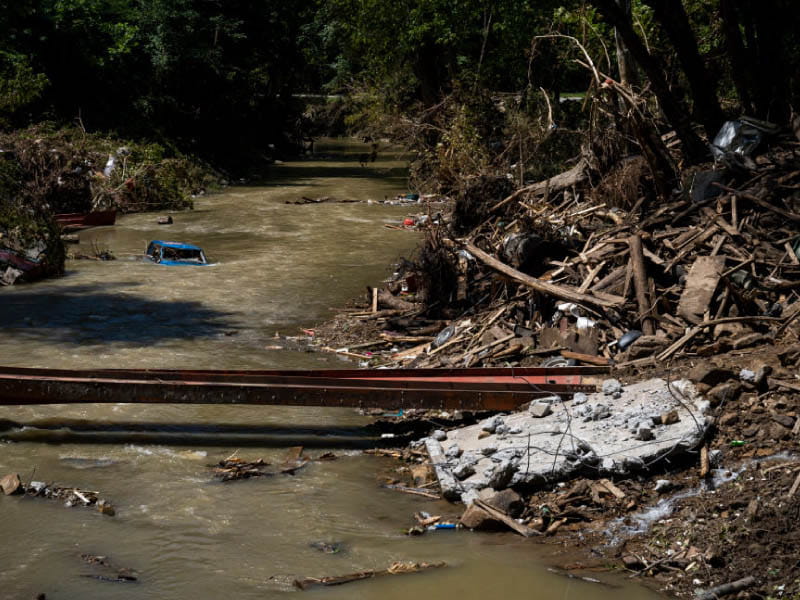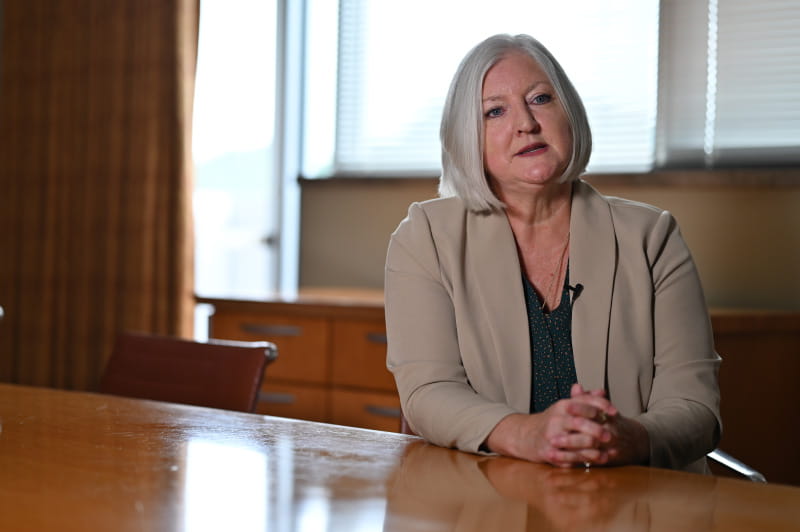Health care, housing still a challenge after flooding devastated eastern Kentucky community
By Tate Gunnerson, American Heart Association News

HAZARD, Kentucky – Dr. Frances Feltner's grandson was asleep in his eastern Kentucky home when his landlord banged on the door. By the time he reached the door, the water had reached his ankles. Thirty minutes later, it was chest deep. He headed to higher ground.
"The floodwaters came in fast, and they came in furious," Feltner said, noting that areas of Kentucky's rural Appalachia region that had never flooded were suddenly underwater. "The rain came down, and it almost seemed like the rain came up at the same time."
The floods in July 2022 left more than 40 people dead. Water rushed through the region's hollows, low-lying land carved by rivers and streams. Flash flooding destroyed entire communities, including infrastructure, homes and schools. Hundreds of people were rescued by helicopter and boat.
"One gentleman walked up to me and said, 'I haven't eaten in a couple of days,'" said Feltner, a Hazard resident who is director of the University of Kentucky Center of Excellence in Rural Health. The center works to address health disparities in rural parts of the state. "People were crying about their possessions but still feeling blessed that they were alive."
As the water subsided, the Federal Emergency Management Agency and other disaster relief organizations descended on the region. Community health workers, including some from Feltner's center, filled backpacks with food, drinking water and other necessities. Deliveries were made by boat, horseback and all-terrain vehicle.
More than 20 months later, the resilient community is still rallying to overcome the disaster – which exacerbated longtime health disparities in eastern Kentucky. Access to health care is a major problem in the region, as are social problems such as low income and lack of housing.
(VIDEO: In Kentucky's Appalachia region, disparities in care add to a reluctance to seek it)
Housing challenges remain
Some Hazard residents were reluctant or unwilling to leave their homes, said Lt. Matthew White with Jessamine County Emergency Medical Services. He's also a firefighter with the county fire district.
White and his team are part of the Bluegrass Emergency Response team. They delivered supplies and searched for survivors. The water in spots was as high as the tops of telephone poles when he arrived, White said.
"Their homes were not structurally sound anymore, but people were trying to stay in them," he said. "They wanted to keep their stuff safe."
Despite the challenges, the community has pulled together. Residents have helped neighbors with food and money. Many have provided temporary shelter for those who lost their homes.
More than $281 million in federal funds, including $110 million in individual assistance to flood survivors, have been approved. Hundreds of thousands of tons of debris have been cleared from roadsides and waterways, and damaged bridges are being repaired or replaced.
Many people were able to rebuild their homes, but others moved to temporary shelters, including community housing provided by a partnership between the Commonwealth Sheltering Program and Kentucky's state parks. A FEMA temporary housing program ended in January.
However, others may never rebuild. As of December 2023, FEMA had approved more than $63 million to acquire 376 properties in flood zones.
"One of the sad things about that is that our population is leaving," Feltner said. "Our churches or community entities are still working together to try to help folks, but there's still a lot of work to be done."

More strain on health care system
It will be years before the flooded areas recover, according to Dr. Maria Braman, chief medical officer at Appalachian Regional Healthcare.
For months, food, cleaning supplies, diapers and other donated items filled the health system's headquarters in Lexington – about 90 miles northwest of Hazard. Its teams on the ground provided tetanus, diphtheria and hepatitis vaccines.
"Because ARH uniquely is already present in the communities that were impacted, we had to quickly transition from just a health care delivery system to a disaster relief organization," Braman said.
Environmental risks concern Braman. Mold growing in waterlogged homes, she noted, can cause pneumonia and make other health conditions worse.
"There are a number of health care concerns that will rise simply because of the exposure, and then the living conditions of being so poor," she said, noting that some people live in homes with dirt floors. "That just layers on top of people who are already suffering from other illnesses."
The day after his home was destroyed, Feltner's grandson Austyn started digging out mud-caked roads so EMS teams and supply deliveries could get through. As a community health worker, he also delivered food and water.
"Helping people during this disaster kept me going, and it has really helped fellow Kentuckians bind together," he said. "Through struggle, we always come back stronger."
American Heart Association News sent reporters to five states to cover rural health challenges, and how people in rural America are working to overcome them.





